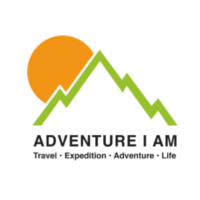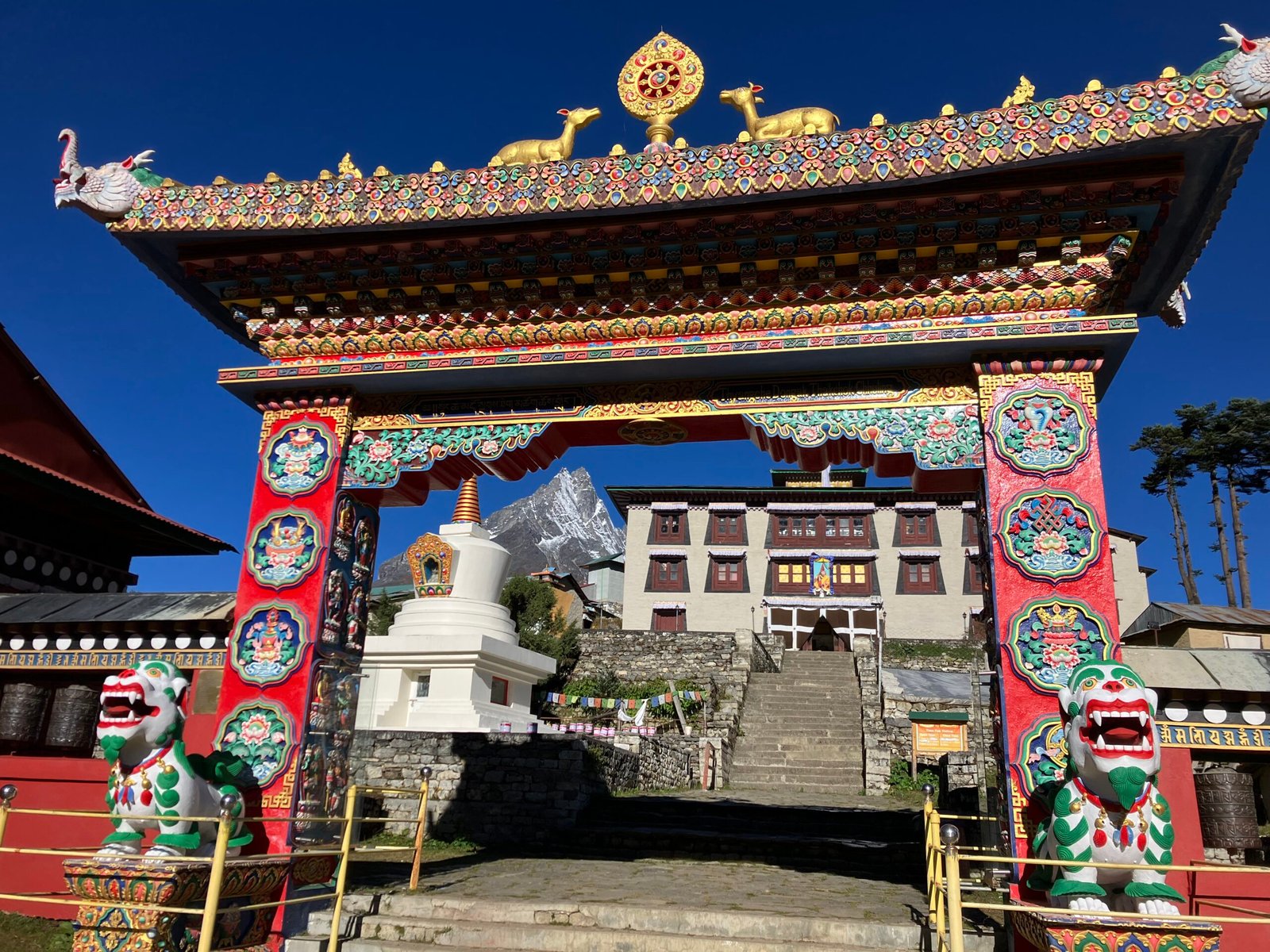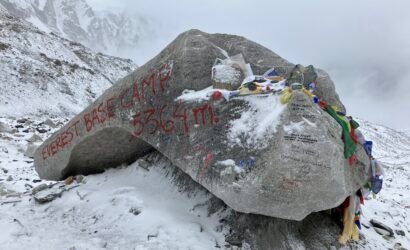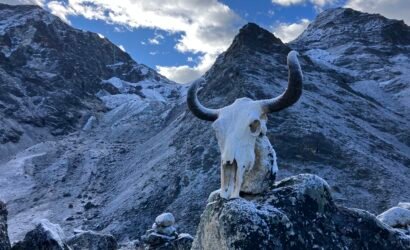CHALLENGING
4000 – 6000m
£2250
Overview
Everest Base Camp has to be on every adventure seeking trekkers bucket list! Trek with your local guide through jaw dropping scenery and Nepali villages to the base of the highest mountain in the world. Everest Base Camp at 5364m (17’598ft) is a must have for any active adventure seeker and trekker, one trip that will make you want to come back for more.
A trek to Everest Base Camp, or EBC, is one of the most famous treks in the world, taking you deep into the heart of the Nepalese Himalaya via remote mountain paths and trails, alongside fast flowing rivers and waterfalls, across suspension bridges into Nepali Sherpa villages and on to your satisfying, emotional arrival at base camp.
Expect to be trekking at least four to five hour days or more, surrounded by many of the highest mountains in the world, along the way soaking up the sights, smells and sounds of the Nepali culture. staying over and enjoying the hospitality in traditional ‘Tea Houses’ in which you will receive a great welcome.
This is one serious adventure to tick off your list, not only do you arrive at the base of the tallest mountain in the world, you’ll also trek to the top of Kala Pattar at 5550m and view Mount Everest from the viewing point at the summit! As well as taking in the views of some of the other tallest peaks on the route you’ll be walking in the footsteps of mountaineering and adventure giants that have gone before.
EBC Highlights
- Seeing the mighty Mount Everest for your first time, and climbing to the top of Kala Pattar.
Itinerary
£2250
The Trip Cost Includes
- Airport Collection.
- City Hotel Room - As per Itinerary (Shared).
- Arrival Welcome Dinner.
- Any internal transport as required including any internal flight, for example a Tour Bus or a flight to Lukla/Pokhara.
- City Cultural Tour.
- All Meals for trip as per itinerary, Breakfast/Lunch/Dinner, including a Tea or Coffee.
- Tea House/Camp/Family Accommodation during the 'Trek' phase.
- ECO Filtered Water for trekking phase.
- Services of an experienced English speaking Guide.
- First Aid Kit (carried by the Guide). We advise each trekker to carry their own small personal First Aid Kit.
- Services of a Porter, one between two trekkers.
- Transportation, Meals, Accommodation and Insurance for your Guide/Porter.
- Permits to Trek & Local/Government Taxes and Paperwork.
- Exclusive adventure.i.am Tee Shirt & Sticker!
- Departure Farewell Dinner.
- Airport Drop Off.
The Trip Cost Excludes
- The international flights to & from Nepal.
- Visa for Nepal.
- Tips for Staff including any Porters.
- Travel & Medical Insurance (that must cover helicopter extraction).
- Trip extensions, excursions or stay overs.
- Some meals (as mentioned in the itinerary).
- Any health inoculations, immunisation or vaccinations, medical treatment or hospitalisations.
- Personal expenses such as wifi, extra bottled water, tea house showers, laundry, bar bill, snacks, mobile phone charging, extra museum/attraction visits, shopping.
- Extra Hotel stays, helicopter rides, for example early return to Kathmandu or extraction.
- Currency Exchange (Staff will show you where to go).
Frequently asked Questions
The ideal trekking seasons are spring (March to May) and autumn (September to November) when the weather is relatively stable and the skies are clear.
The trek is challenging but doesn’t require technical climbing skills. Trekkers should be physically fit, acclimatize properly, and be prepared for varying weather conditions.
Yes, you can charge batteries en route. Chargers should be brought. Most tea houses have charging facilities, but it’s wise to carry a portable charger or a power bank. Charging may cost extra in some places.
Yes,Wi-Fi is available in many of the tea houses, but it may be slow and expensive. Do not rely on it for essential communication. Sometimes, there might be technical problems.
The Internet in Nepal is not as fast as you may be used to and at times you can just lose a connection. There are several providers that offer an area of Wi-Fi coverage log-in, be aware though you may trek in/out of those areas. Ask at reception in the tea house.
Tea houses offer a variety of meals, including local and international dishes. While vegetarian options are widely available, it’s recommended to avoid meat at higher altitudes due to limited refrigeration. Tea houses and lodges along the route provide accommodation. It’s advisable to book in advance during peak seasons. The facilities may be basic, but they offer a unique experience. There are hot shower facilities as well, some tea houses may charge for a hot shower. Do not worry, the team will make all the bookings for you.
Acclimatize gradually, stay hydrated, and ascend slowly. Consider taking Diamox (consult your doctor), and be aware of symptoms of altitude sickness. For more detail please see our Blog posts.
Kala Patthar is a notable landmark in the Everest region of Nepal. It’s a popular trekking destination known for its stunning views of Mount Everest and the surrounding Himalayan peaks. The elevation of Kala Patthar is approximately 5,643 meters (18,514 feet) above sea level. Trekkers often climb Kala Patthar early in the morning to witness the sunrise over Mount Everest, making it one of the highlights of the Everest Base Camp trek.
There are medical posts along the route, and helicopters can be arranged for evacuation in emergencies. You MUST have travel insurance that covers high-altitude trekking to the highest altitude you will reach, including helicopter evacuation. Your Guide will be carrying a First Aid Kit and is qualified.












